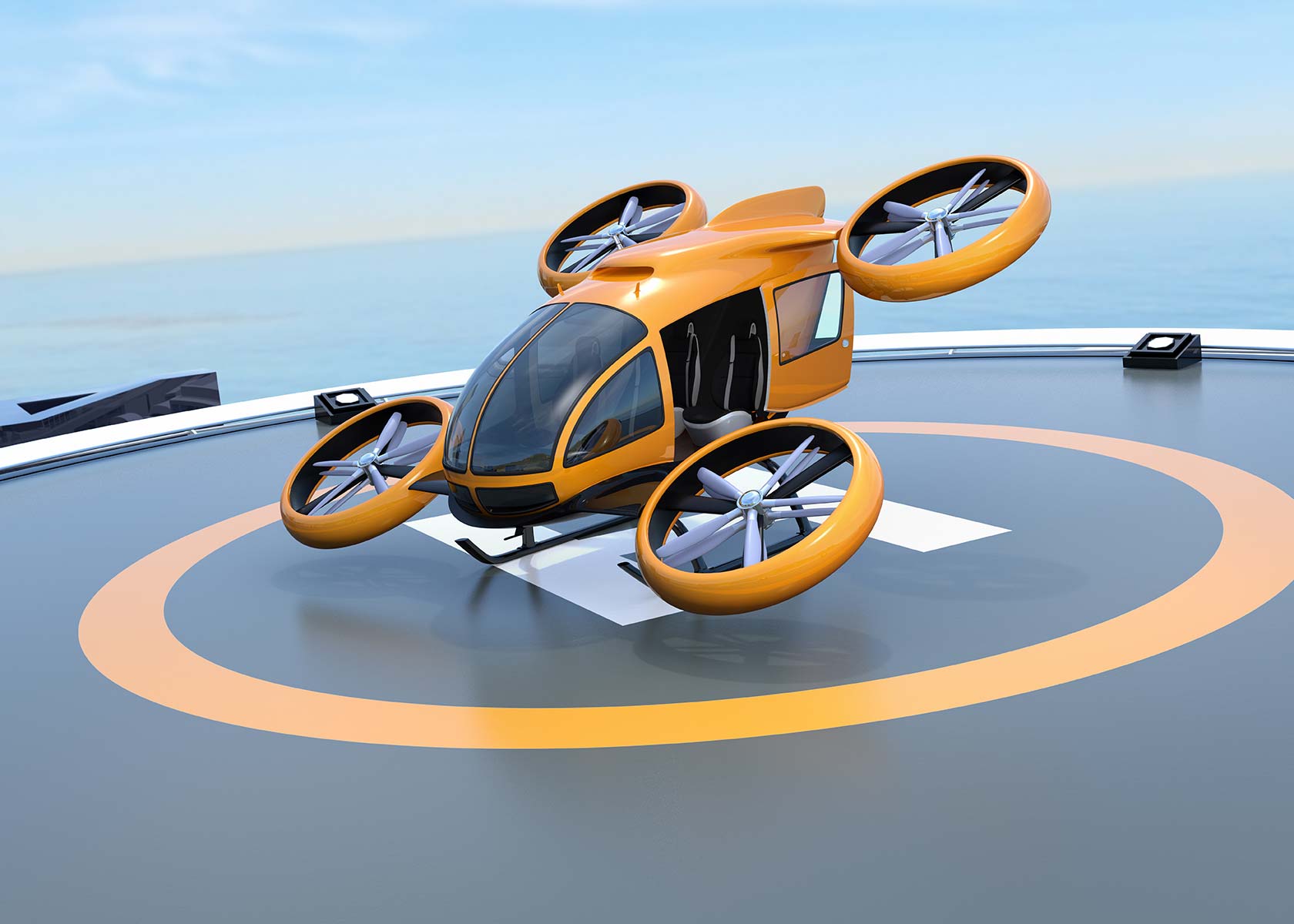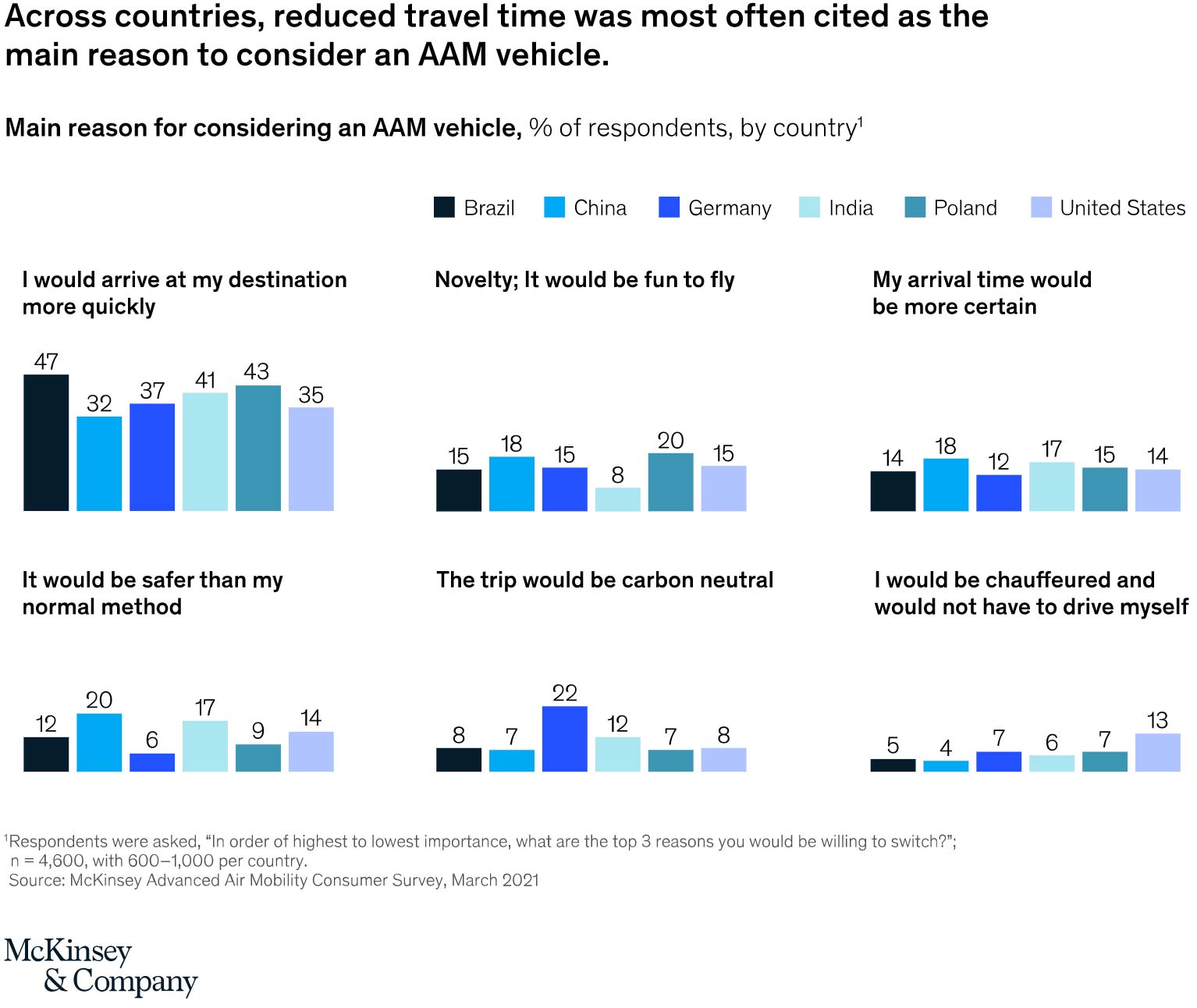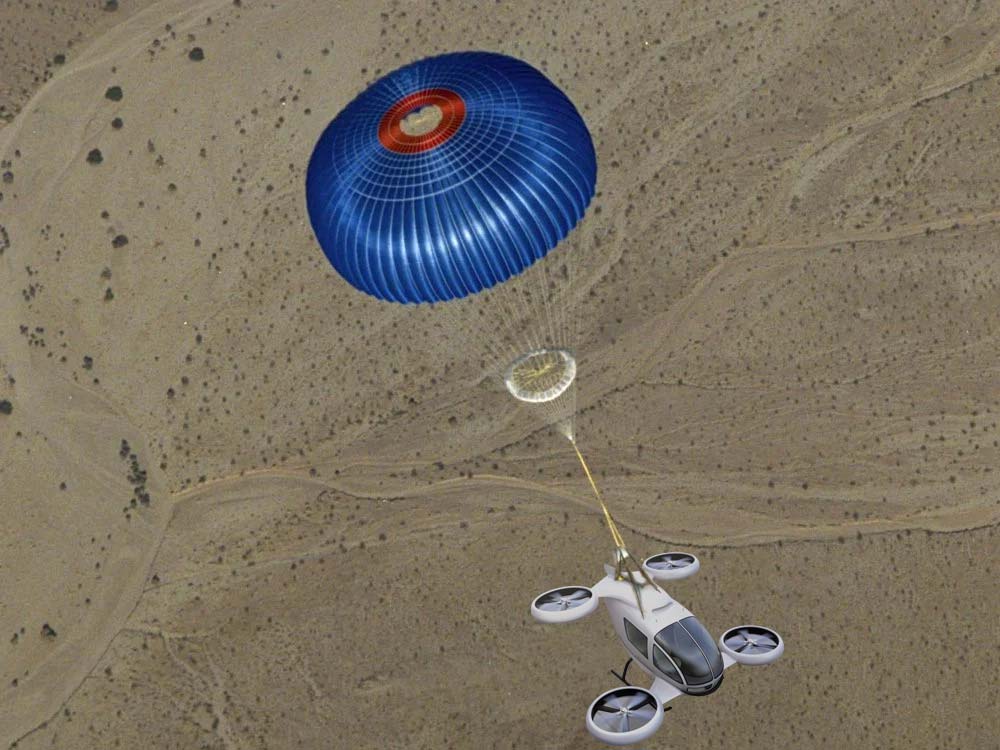What is an Aerotaxi?
Electric air taxis, known as eVTOLs, are the futuristic flying cars once seen only in science fiction. These fully electric vehicles, combining the capabilities of helicopters and small planes, aim to provide affordable, safe, and environmentally friendly transportation within cities. Startups Archer Aviation, Volocopter and Lilium plan to launch the first flying taxi networks by 2024.
The market for eVTOLs is divided into two directions: automated vehicles for extra passenger space and reduced operating costs and pilot-passenger vehicles for passenger comfort and experience data. Automated vehicles will feature flight systems with sensors, radar, and lidar for safe and comfortable travel. Remote systems will also allow an “external pilot” to take control in case of problems.
The advent of eVTOL air taxis will transform city design and lifestyles. Skyports at office buildings, train stations, and transportation hubs will make multimodal commuting easier. Journeys that once took 40 minutes to travel 20 miles will become even quicker and reach farther destinations. Companies believe they can provide air taxi services at the same or lower prices as traditional taxis.
Technology
Electric propulsion drives these vehicles, as previously noted, due to the stability provided by electric multirotors’ large, instantaneous torque output. This makes them ideal for stabilizing aircraft in flight and enhancing passenger comfort.
Manufacturers are divided between those that prefer fixed-wing models with more rotors for both flying and hovering, and those who choose directional rotors to reduce weight and increase rotor efficiency.
Advances in lithium battery technology have overcome the energy transport challenge, making many electric air vehicles commercially viable. Recharge time depends on the aircraft and battery technology, but on average, it takes about an hour to recharge for an hour of flight. To reduce recharge time, some manufacturers are opting for plug-in battery packs.
Certification
The American FAA and European EASA are working closely with the industry to establish safety and environmental standards for new technologies in the field of electric air mobility. The certification process for these new flying vehicles is closely aligned with their technological advancements. The goal is to create a comprehensive set of standards that are established through a variety of tests, including crash tests and unexpected flight scenarios. As this is a new and rapidly developing industry, it is essential to have a clear and standardized certification process in place to ensure a fair and competitive market, and to provide clarity for future manufacturers and investors.
However, the process of testing and regulation is both time-consuming and expensive.
Safety
eVTOL electric aircraft offer unmatched safety compared to traditional aircraft and helicopters. These vehicles are designed with multiple electrical and mechanical systems that ensure a secure flight. With distributed propulsion and smart software, even if one or multiple propellers fail, the aircraft can still safely fly or bring passengers to the ground. In extreme cases of structural damage, all eVTOL aircraft are equipped with quick-deploying ballistic parachutes for added security.
The cost of eVTOL
According to several studies, conducted by leading companies in the design of eVTOLs for “urban” use, by various venture capitalists and even by a NASA study, each eVTOL passenger could pay from $ 2.25 per mile to a maximum of $ 11 per mile .
This wide range of prices derives from several factors, such as the location and the duration of the flight.
The future of transportation is about to change
In the near future, “airsharing” will replace “ridesharing“. At first, air taxis will primarily be used by executives, professionals, and wealthy individuals who need to travel quickly. However, over time, this mode of transportation will become more accessible to the general public.
The rise of remote work and its impact on society has resulted in a doubled workspace. On one hand, remote workers are leaving cities in search of quieter, less congested, and more affordable places to live. On the other hand, the need to visit the city for work or leisure remains, but the distance can make it challenging.
This is where air taxis come in. They offer a convenient solution for individuals, families, and professionals to travel smartly. No more waiting for public transportation or searching for parking spaces.
Looking beyond the city, air taxis also open up new possibilities. They can provide fast connections between hotels and tourist destinations, such as coral atolls and ski resorts.
Aeroauto was founded to support the future of mobility. With its expertise and professionals, the company can help companies in the mobility sector make the right decisions in the coming years. A new era of sustainable mobility is on the horizon and Aeroauto is ready to lead the way with its commitment to excellence in electric vehicles, batteries, and sustainable solutions.
Air Taxi Models
All the models shown are under negotiations between Aeroauto and their Manufacturers.








